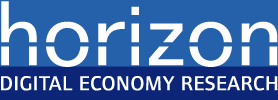The last decade has seen rapid changes in how film and television audiences are able to access content. The traditional screen technology of the television set has been joined by smart TVs, laptops, internet connected games consoles, smartphones and tablet computers to create an ever growing number of opportunities for viewers to engage with multiple screens at once.
The media industries are simultaneously focusing on how to expand their content onto these screens, offering a wider range of content forms beyond television and film. For example interactive services provide the ability to communicate with other viewers during broadcasts, play additional material, replay highlights or switch to watching on different devices.
Further innovation is to be expected through cross-platform integrations, such as the new Walking Dead app that integrates events in each episode with a second-screen based app. However, little is understood about how these technologies are being used and how that use intersects with more traditional television-viewing behaviour and the wider context of the household. In addition, current models rely on reported behaviour rather than more accurate observed data.
This project will generate a significant amount of ethnographic data on how different households make use of the wide range of media screens available to them. It will do so by developing both new forms of monitoring equipment capable of tracking and logging audience activity across multiple screens, and new approaches to analysing and using this data. This will enable the industry to understand audience multi-screen behaviour in a more nuanced and iterative manner.
Partners: BT, Thinkbox, Red Bee Media, OFCOM













